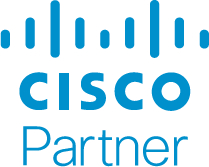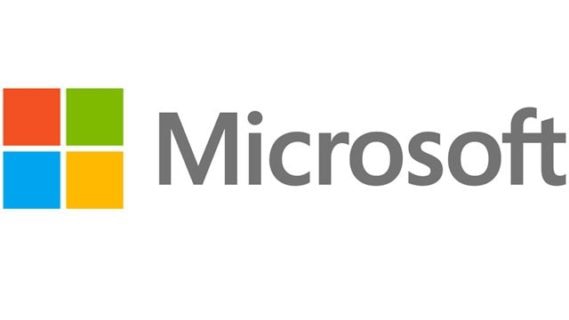May 13, 2022
Mobile Workflows and Smart Devices Elevate Senior Care
Technology supports independent living and improves patient outcomes while easing providers’ operational challenges.
IN THIS ARTICLE
The Evolution of Care for Post-Acute Patients and Older Adults
Technology That Supports Independent Living
IT Considerations for Modern Senior Care
For Senior Care Providers, Technology Is a Powerful Problem-Solver
Post-acute and senior care providers face numerous challenges.
Staffing shortages are severe, with 69 percent of nursing homes and 66 percent of assisted living providers reporting that hiring new staff is “very difficult.” Costs are rising while profit margins are dropping. Most older adults want to maintain their independence as long as possible, so they may expect more support from independent and assisted living. Meanwhile, the pandemic alerted families and potential residents to the dangers of social isolation, leading to greater demand for video calling and other technology-enhanced services.
As care providers strive to do more with less — while keeping residents safe, healthy and engaged — many find that technology investments relieve multiple pressures.
Remote patient monitoring (RPM), smart home solutions, mobile devices and digital workflows deliver benefits across the care spectrum. For residents in independent and assisted living, such tools help maintain autonomy, safety and social engagement. In nursing homes, mobile solutions and digital workflows help keep residents safe and healthy under reduced staffing, primarily by increasing efficiency and streamlining communication. This enables clinicians to care for more residents while reducing the burnout that can exacerbate staff shortages.
Currently, many facilities lag behind consumers’ expectations of technology, although that is starting to change in the wake of the pandemic. A post-COVID-19 survey of assisted living and nursing homes in South Carolina, for example, found that only 36 percent had tablets and desktop computers available for residents, and only 47 percent dedicated an employee to help residents with technology.
Independent and assisted living residents and their families now expect technology-enhanced services. Supporting these solutions requires appropriate networking and cybersecurity protection. As providers work to meet residents’ needs and support their staff, many engage an expert partner to help them select and implement the best technologies for their environments.
Assess Existing IT: Many solutions serve multiple purposes, but staff may use only certain capabilities. As a result, IT solutions may be duplicative, and employees’ use may vary across locations.
Identify Priorities: When investing in new technologies, ensure they address primary goals and high-priority problems. As features evolve, solutions may be able to address secondary goals in the future.
Plan for Adoption: Increase the success of IT investments by communicating with residents, piloting new tools before launching full rollouts, training users and providing ongoing support.
The Evolution of Care for Post-Acute Patients and Older Adults
Technology is driving an evolution in senior care that has the potential to transform the industry. Residents and families recognize the benefits this evolution offers and are beginning to expect consumer-level amenities and services. Healthcare providers that invest in modern IT can differentiate themselves while improving their financial, staffing and risk management positions.
SPOTLIGHT ON TECHNOLOGY
Before the pandemic, most senior care facilities lagged in technology. Providers were aware that technology could enhance workflows and improve residents’ quality of life, but many viewed IT investments as optional. The pandemic changed that perception, accelerating IT adoption and highlighting its many benefits to staff, residents and families.
REMOTE MONITORING
Remote patient monitoring (RPM) grew during the pandemic and has expanded to remote resident monitoring. Cameras that collect vitals, healthcare wearables and smart devices — such as blood pressure cuffs that report patient data to an electronic health record — automate monitoring activities, which simplifies patient care.
FOCUS ON SAFETY
Smart home devices provide additional monitoring that increases residents’ safety in independent and assisted living environments. Sensors can track residents’ movements and alert staff to falls or an extended lack of activity. They can monitor and control for unsafe conditions involving water leaks, kitchen dangers and electrical appliances.
EASE AND INDEPENDENCE
Most adults want to age in place, and smart devices help make that possible. For example, smart assistants, digital pill dispensers, tablets with video-calling capabilities and voice-activated room features such as blinds, lights and thermostats help older adults navigate day-to-day tasks independently, while also reducing the demand on staff.
EXPANSION OF VIRTUAL CARE
The explosion of telehealth in general has led to its increased adoption for senior care. As reimbursement continues to expand, use cases will too. Virtual care lets residents see specialists without traveling, which lowers costs and reduces stress and safety risks for residents who find it difficult to visit other locations.
Learn how to develop a plan to integrate IT that improves care, supports staff and reduces risk.
Using Senior Care Technology Eases Challenges
81 million
The projected number of U.S. adults age 65 or older by 2040, up from 54 million in 20191
30%
The percentage of U.S. assisted living facilities with a high staffing shortage3
14%
The projected percentage of U.S. adults age 65 or older with Alzheimer’s disease by 2060, up from 6% in 20202
96%
The percentage of U.S. adults age 50 or over who support requiring senior care facilities to enable video visitation between residents and families4
59%
The percentage of U.S. nursing homes with a high staffing shortage3
81%
The percentage of communities that consider engagement technology a differentiator5
Sources: 1Administration for Community Living, "Projected Future Growth of Older Population," May 2021; 2Alzheimer’s Association, "2022 Alzheimer’s Disease Facts and Figures," March 2022; 3American Health Care Association and National Center for Assisted Living, "State of the Long Term Care Industry," September 2021; 4AARP, "Coronavirus Study: Advocacy Issues," April 2020; 5iN2L, "Senior Living 2022: The State of Engagement and Technology," March 2020
Technology That Supports Independent Living
Many technologies help senior care providers achieve several goals: boosting staff efficiency, improving care quality, enhancing residents’ safety and increasing their independence. These benefits are extremely valuable in light of the many challenges facing the industry. Often, technology also helps improve quality of life: A University of Nebraska–Lincoln pilot found that after four weeks of using voice-activated devices, residents in independent living felt less lonely.
Smart home solutions, smart medical devices, mobile devices and virtual reality experiences create an environment that is user friendly and empowering for residents, staff and clinicians. From a healthcare perspective, technology-enabled care is more likely to be proactive and data driven. This leads to better patient outcomes, which ultimately helps providers lower costs.
For example, RPM allows for automated monitoring and timely interventions, which can reduce fall risks and hospitalizations (as well as rehospitalizations). Tablets and smartphones streamline manual tasks and administrative duties so clinicians can focus on their most important job: caring for patients. This also alleviates burnout, one of the biggest contributors to the workforce shortage.
Deployed effectively, these solutions can improve outcomes for patients and residents while reducing the burden on staff.

Smart Home Solutions
Smart assistants help residents with tasks such as finding the day’s menu, checking calendars and booking transportation, while sensors monitor residents’ activity and living spaces and alert staff to potential concerns. Providers can simplify management and enforce cybersecurity by managing smart home devices as a fleet. Providers considering these solutions can ease adoption through proper training, support and pilot projects before rolling out full deployments.
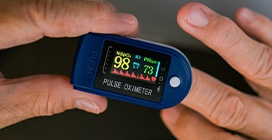
Smart Medical Devices
Smart medical devices are becoming more widely used in senior care, including blood pressure monitors, pulse oximeters and glucose monitors. These automate patient monitoring processes and, through more routine data reporting, enable clinicians to detect health changes sooner. In nursing homes, clinicians may use cameras to check vital signs, making it easier to care for a larger number of residents.
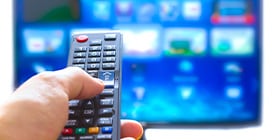
Smart TVs and Signage
Smart TVs deliver streaming entertainment that older adults find familiar. TVs can also support social activity, resident communication and video calls. Similarly, digital signage can deliver information about menus, activities and wayfinding. To address the challenge of integrating these devices into operations in a way that does not create additional work for staff, centralized management is often the most effective approach.
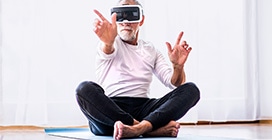
Versatile Virtual Reality
Virtual reality solutions serve various medical purposes: augmenting physical fitness, therapy and rehabilitation; facilitating meditation to calm patients with Alzheimer’s; helping clinicians assess balance and fall risks; and managing pain. VR content can also be highly engaging, letting residents see family events and travel to new places. For staff, VR is a powerful way to increase understanding of the physical challenges of aging.

Tablets and Smartphones
Technology gaps between younger and older people have decreased: 61 percent of adults age 65 or older own a smartphone, and 44 percent own a tablet. During the pandemic, many residents purchased these devices for videoconferencing. In nursing homes, mobile devices drive easier, faster digital workflows: Clinicians can access information about medications, appointments and doctors’ orders in one place, wherever they are.

The Resident Experience
IT solutions help create a more satisfying experience for residents and families. When smart devices are easy to use, well integrated into daily routines and supported by high-quality Wi-Fi, residents enjoy greater independence while staying engaged. There is peace of mind for families in knowing that providers are elevating residents’ health, safety and quality of life through modern technologies.

The Staff Experience
Mobile devices, digital workflows and RPM allow clinicians to do more with less, even as they help to improve care. As a result, such tools and practices significantly enhance the clinician experience, a critical consideration given the workforce shortage. Care teams are more efficient and better coordinated when they have mobile access to electronic records, clinical collaboration platforms and other tools.
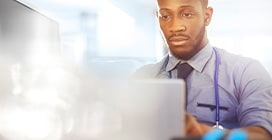
Cost and Risk Management
Risk management is a paramount concern for everyone in the senior care industry. Technology helps reduce risks in several ways. RPM and smart medical devices increase monitoring and help clinicians identify health changes and issues before patients’ conditions worsen. Smart home solutions help reduce the risk of falls and other dangers for residents living alone.
Start taking advantage of senior care technologies that deliver valuable results to staff, residents and providers.
Partner Up to Build IT Strategy
Because many facilities lack onsite IT teams, staff may struggle to optimize their use of technology, including best practices for cybersecurity and data privacy. Technology concierges can help with routine setup and troubleshooting, but they don’t bring in-depth expertise. For example, many providers find it challenging to integrate electronic health records into mobile devices. Engaging a trusted partner can be the most expedient and cost-effective strategy.
Network Assessments
A secure, high-performing network is the bedrock of modern senior care. A partner can provide guidance on what’s needed and build a plan to meet key objectives.
Help Desk Services
As providers increase their use of technology, many find that outsourcing help desk support enables small IT teams to focus on more strategic activities.
Security Services
After a data breach, a ransomware attack or another security event, incident response retainers provide support that helps providers minimize damage and recover quickly.
Data Center Profile
CDW’s Digital Velocity Solutions practice helps providers develop an optimized data center strategy, including evaluating whether to maintain specific workloads on-premises or move them to the cloud.
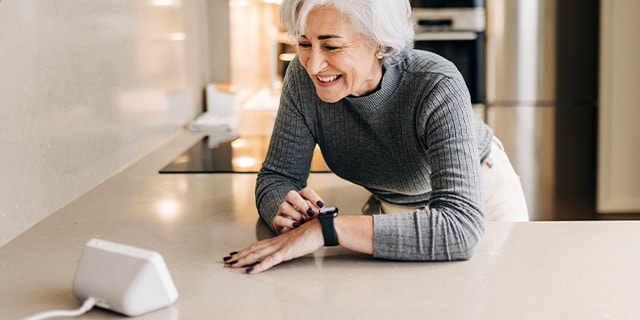
Establish Key Infrastructure
Elevating senior care technology often requires a corresponding upgrade to networking, especially Wi-Fi. The old model of focusing on Wi-Fi in common areas is no longer sufficient. Residents expect reliable Wi-Fi in their rooms, and clinicians need pervasive connectivity for mobile workflows. In essence, facilities are starting to serve as small ISPs.
Although some providers have advanced in this area, many networking infrastructures lack the bandwidth and coverage required to support desired improvements. With help from networking experts, providers should assess their needs and develop a strategy to build the right IT foundation for digital modernization.
Some providers can offset these costs through revenue-generating services, such as charging residents for Wi-Fi, personal area networks and streaming television.
Make Security a Priority
Expanding the digital footprint and introducing devices to the network create cybersecurity risks. Providers must protect devices from compromise and maintain patient data privacy. Often, staff and residents take a bring-your-own-device approach, further increasing risk and management challenges. Providers should consider security solutions for endpoints, networks and cloud-based applications. .
Providers also need a strategy for ongoing management and security, particularly as the number of devices increases. Such plans should consider the skills and capabilities of existing staff. Where internal expertise is lacking, it can help to engage a partner to assess security needs and develop an incident response plan. Some providers use an incident response retainer service to ensure they have immediate support if a security breach occurs.
Create an Adoption Plan
To get the most from IT investments, providers must help staff and residents learn to use and integrate new solutions. Simplicity is key. The more user-friendly devices are, the more readily they’ll be adopted by residents, patients and clinicians. Adoption services can help, as third-party experts train users onsite to ensure they know how to use new tools and take advantage of all the features.
Story by
Jessica Longly, who is the Business Development Strategist for CDW Healthcare and a 14-year veteran of CDW. She is responsible for executing strategic initiatives that support the needs of CDW Healthcare’s senior care and long-term care customers.
Liz Cramer, who is the Chief Post-Acute and Senior Care Strategist for CDW Healthcare. She has 20 years of multi-site experience in therapy/SNF/Senior Living operations and has a track record of building and leading strong, successful teams that work closely with executive and clinical operators to maximize workflows and operational efficiencies.
